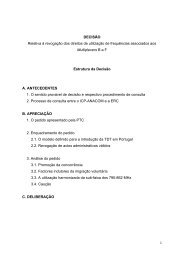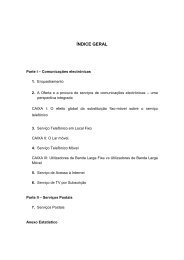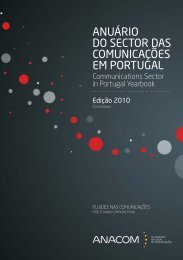The Price of Plurality - Stakeholders - Ofcom
The Price of Plurality - Stakeholders - Ofcom
The Price of Plurality - Stakeholders - Ofcom
You also want an ePaper? Increase the reach of your titles
YUMPU automatically turns print PDFs into web optimized ePapers that Google loves.
28Robin Fosterbe concentrated in the hands <strong>of</strong> just a few platform owners. Howmight these developments affect plurality <strong>of</strong> provision at each stage<strong>of</strong> the value chain?Content creationOver the past twenty years or so, we have moved from anenvironment in which most TV production was carried out by the twomain integrated broadcasters, BBC and ITV, to one in which there arenow around 800 independent producers, accounting for around 45%<strong>of</strong> annual programme spend in the UK. 3<strong>The</strong> catalysts for this change were the independent productionquota and the launch <strong>of</strong> Channel 4, but the independent sectornow has its own momentum, with many commercial and creativesuccess stories. <strong>The</strong> BBC’s WOCC (Window <strong>of</strong> Creative Competition)guarantees that, in addition to the statutory 25% quota, a further 25<strong>of</strong> BBC commissions is open to competition between external andin-house producers. Independent producers could therefore accountfor as much as 50% <strong>of</strong> BBC commissions if they have the best ideas.This change has resulted in a huge plurality <strong>of</strong> provision in contentcreation, with intense competition between suppliers for commissionsfrom the main broadcasters, and much innovation <strong>of</strong> content andformats. <strong>The</strong> existence <strong>of</strong> a large number <strong>of</strong> independent suppliershelps to guarantee a diversity <strong>of</strong> views, perspectives and approaches,from producers with a range <strong>of</strong> corporate cultures and regionalbackgrounds.In future, plurality in content creation will be further stimulatedby the blurring <strong>of</strong> boundaries between different types <strong>of</strong> mediaand globalisation <strong>of</strong> media markets. Audiovisual content is beingdeveloped by an increasingly wide range <strong>of</strong> producers – from thepublishing, games and music sectors – leading to a further potentialexplosion in content available. New digital media is allowingindividuals to create their own content, for example in posting theirown videos or blogs. Community media organisations are contributingto the range and diversity <strong>of</strong> content creation in the UK and aroundthe world. Arts and cultural organisations such as the ScienceMuseum and the Tate are creating their own online content. CharlesLeadbetter, in his recent essay for <strong>Ofcom</strong>, argues that the means <strong>of</strong>media production are becoming increasingly widely distributed. Newmedia communities such as Wikipedia and Second Life allow a slidingscale <strong>of</strong> attention: people can either contribute a lot or a little. Thisnew form <strong>of</strong> “social production”, he argues, <strong>of</strong>fers benefi ts in terms <strong>of</strong>freedom, democracy and equality. 4Alongside this generally bright picture, some risks are worth noting.<strong>The</strong> business dynamics <strong>of</strong> the independent TV production sector seemlikely to prompt further moves towards consolidation, with increasingmarket shares for a smaller number <strong>of</strong> larger fi rms, perhaps leadingto a less diverse and less innovative sector. However, entry barriersto the sector remain low, which means there should be a continuingsupply <strong>of</strong> new smaller fi rms competing for commissions with the bigger







